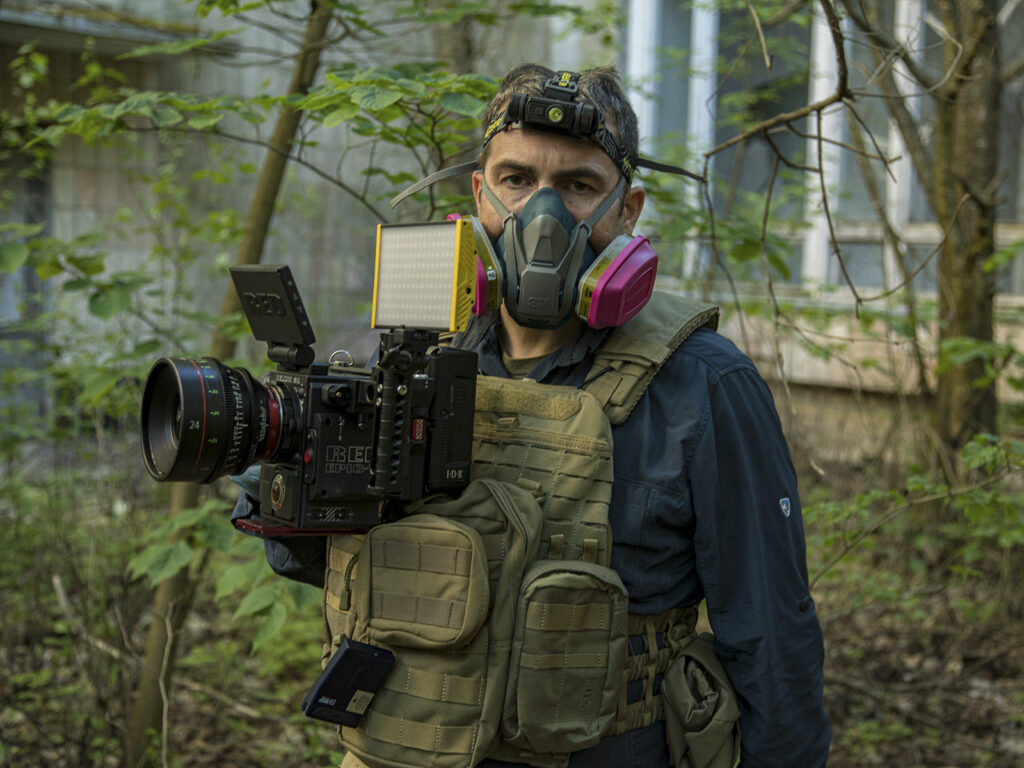Some people turn 40 and get into Yoga or buy a motorcycle. Philip Grossman (MBA ’99) went to Chernobyl.
Over the past 11 years, Grossman has documented the people and towns around the infamous Ukrainian nuclear plant. His passion project has become a second career for the media technology executive, hosting and producing a 1 hour special on the Discovery/Science Channel, having his photos displayed at the United Nations and footage used in the HBO’s miniseries “Chernobyl.”
“I turned 40, but instead of getting a Corvette, I went to Chernobyl,” he jokes.
Grossman, who works in Atlanta as vice president for media technology company Digital Glue, grew up in Harrisburg, Pennsylvania. He was in third grade when the nearby nuclear reactor at Three Mile Island suffered a near meltdown in 1979. The engineers narrowly avoided a tragedy, but Grossman grew up wondering how bad it could’ve been.
The Chernobyl nuclear power station catastrophe in 1986 always loomed large in his mind, but responsible adults don’t just run off to explore radioactive dead zones. Do they?
By 2011, Grossman pushed aside his dreams of international adventure and built a successful career as an IT executive. He had a great job managing IT solutions for the hotel chain IHG, but he needed something else.
“I was tired of my job. I had a great boss who I loved, but he retired early, and I was thinking, ‘Do I want to do this for the rest of my life?”
His then-girlfriend and now wife, Elizabeth Hanson, encouraged him to go and spend time working on his photography, a hobby of his since childhood. He decided to investigate the place that captured his imagination since the 1980s, a place where almost no one else had been — Chernobyl.
It was the adventure he needed that turned into more.
“I thought it was going to be a once-in-a-lifetime opportunity,” he says, thinking back about the beginning. “I managed to bribe my way into the control room of Unit Number 4 (where the meltdown started,) and I thought, ‘Well, I did that.’ and flew home.”
A few months later, he got a call from a travel buddy going back to Chernobyl and asked if Grossman was still interested.
“I said, ‘Yeah, but only if we go longer,’” Grossman said.
More than a dozen trips to Ukraine and countless camera bags later, Grossman’s photographs of Chernobyl made him one of the preeminent American experts on filming at the site.
He’s more interested in what has happened since the disaster than how the disaster happened. His photos and video tell the stories of nature reclaiming abandoned towns, people reclaiming their ancestral homes near the plant and the army of engineers and scientists who work to keep the area safe from another disaster.
So in February 2022, when Russian troops sat poised to invade Ukraine just north of Chernobyl, he was worried about his friends working at the plant, the elderly women living in the nearby village, and the safety of the whole region.
“In the U.S., we kept hearing on the news that ‘Russia’s going to attack. Russia’s going to attack,’” he said. “But all of my friends in Ukraine and Poland, we’re like, ‘No, Putin is not going to do it.’”
“They had no idea this was going to happen,” he said of his friends at the plant.
His friends sent photos of tanks rolling through the exclusion zone toward the plant and engineers sleeping on the floor of their offices.
“They were prisoners of war at that time, and they were shocked,” he said.
Russian soldiers occupied the plant for 35 days, ransacked many labs and facilities, and took needed safety equipment. The soldiers caused millions of dollars in damage, but the plant’s caretakers kept the nuclear materials cooled and avoided disaster.
In August, nuclear regulators finished inspecting the plant, documenting the plant’s ability to operate and monitor the cores was restored, according to the World Nuclear Association, a nuclear energy trade group.
Despite the relative calm around the plant, Grossman is not sure when he’ll be able to return. One thing he learned is his friends in the Chernobyl region know how to rebuild and persist, and he can’t wait to see them again.
Grossman’s documentary is available as part of the Discovery Science Channel’s “Mysteries of the Abandoned.” He is working on another documentary on the abandoned Soviet Space Shuttle Program in Baikonur, Kazakhstan.

